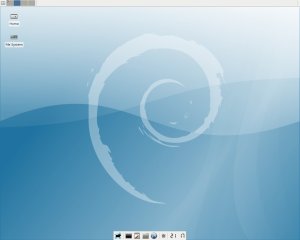After the silo.conf silliness on Sunday, I finally got things sorted out with my Ultra10 this evening. Once I figured out what I needed to do, getting things up and running well went very quickly. Here’s what I did:
Remove Creator3D card to do installation with the onboard video (apparently there is a boot option to pass to get around this, but I didn’t know it)
When install is complete and your system is bootable, put Creator3D card back in, boot: Linux video=atyfb:off
Once booted, edit /etc/silo.conf so it looks like this:
root=/dev/hda1
partition=1
default=Linux
read-only
timeout=100
append=”video=atyfb:off”image=/boot/vmlinuz
label=Linux
initrd=/boot/initrd.imgimage=/boot/vmlinuz.old
label=LinuxOLD
initrd=/boot/initrd.img.old
Much of this is already in here, the append bit is the important thing. Hurrah to the fabulous Debian GNU/Linux Sparc Installation Guide for giving me this answer.
Getting xwindows going from here was trivial, just installed xserver-xorg and xfce4 and we were in business. The default Debian XFCE4 screen never looked so good.

Next? Sound. Install alsa. Then I found this page by Ivan Griffin which simply recommended the following:
Just add add the following to /etc/modules:
snd_sun_cs4231
snd_pcm_oss
snd_mixer_oss
These load up on boot. Voila – sound!
With a gig of ram and a 440mhz Sparc Ultra10 processor this thing is zipping along, I’m very impressed with how well this is running, especially when compared to Solaris 10. Now to decide what this lovely machine will be used for. I’m not to keen on the idea of keeping both giant monitors on my desk, my poor laptop is being sat on by a Sun keyboard.

